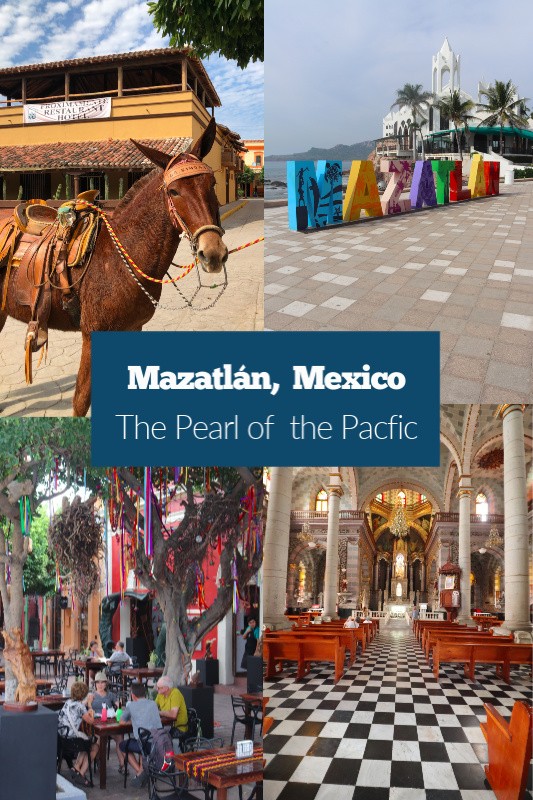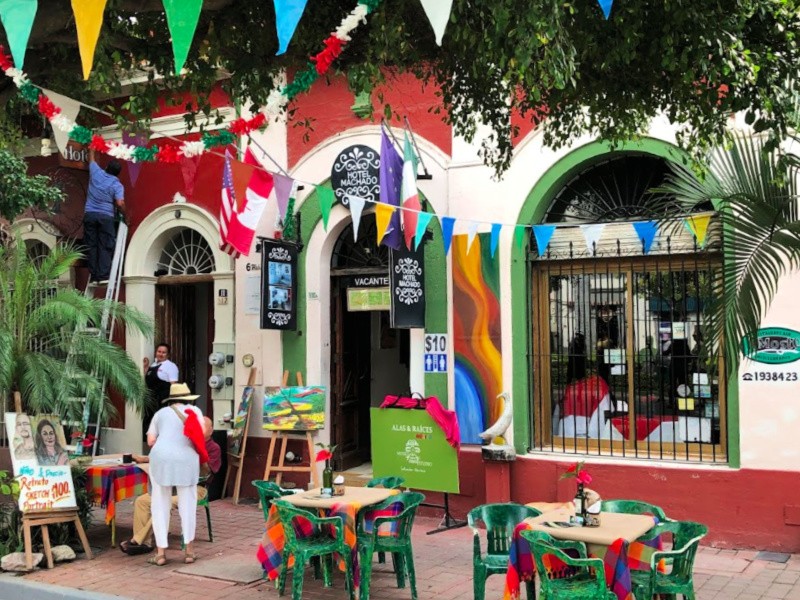 I don’t know what it was about Mazatlan that re-ignited my inner backpacker. You would think that, a decade after relegating my dusty Canadian-flag emblazoned backpack to the far reaches of the closet in the spare bedroom, the new me – a 44 year-old mother of two – would be perfectly happy to lounge by a pool in Mexico, sipping cocktails, waiting for the all-inclusive dinner bell to ring.
I don’t know what it was about Mazatlan that re-ignited my inner backpacker. You would think that, a decade after relegating my dusty Canadian-flag emblazoned backpack to the far reaches of the closet in the spare bedroom, the new me – a 44 year-old mother of two – would be perfectly happy to lounge by a pool in Mexico, sipping cocktails, waiting for the all-inclusive dinner bell to ring.
But, with fond memories of backpacking through Bolivia and Peru in the late 1990’s, and the quest for a holiday with slightly more depth than a simple beach vacation, I recognized the Pacific port of Mazatlan as a city with a story to tell.
Mazatlan – a place of wealth
My pre-trip research told me that Mazatlan is a city that has been redefining itself for centuries. Colonial settlers mined silver and gold throughout the 1800’s, bringing Europeans to the new port. The Germans brought their recipe for beer, and the polka music that would later be transformed into the distinctive Banda style. For a time, the French controlled the region, as they attempted to colonize Mexico. Over the years, merchants from all over Asia came to Mazatlan by sea.
Articles from the New York Times’ archive from the early 1900’s reveals a new port, a railway, and fierce fighting during the revolution. After the revolution, Mazatlan continued growing, exploiting another kind of wealth – its seafood, and then, what would become its largest industry: tourism.
Authors Herman Melville, Joseph Conrad and Jack Kerouac all visited Mazatlan in their time, as did 1950’s movie stars like John Wayne, who filmed westerns in nearby Durango. The 1950’s also saw the growth of a dedicated tourist area: The Zona Dorada, or “Golden Zone”. A New York Times travel story from 1970 describes “sandy beaches lined with first class hotels resplendent in gay pinks, greens and blues.”
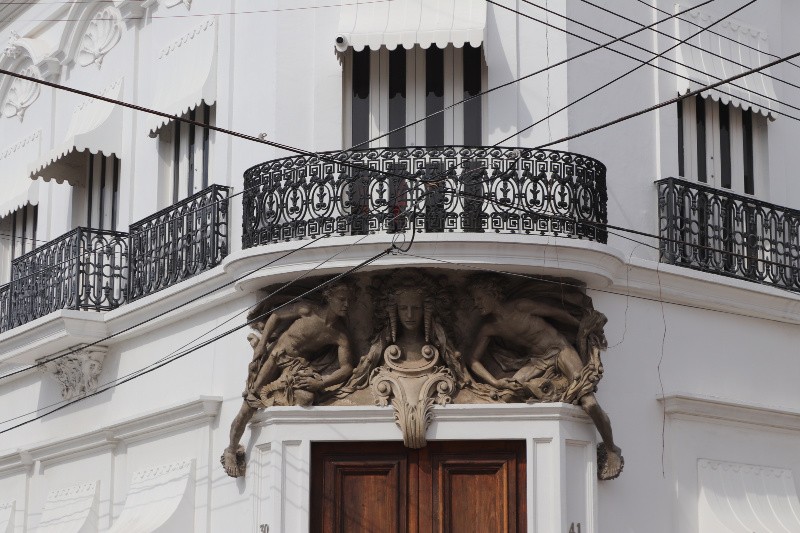
A refurbished colonial-era residence in Mazatlan’s historic town centre/photo: Helen Earley
I was most taken with a 2009 New York Times article by writer Freda Moon describing the renaissance of the city’s historic town centre, which she says, after a period of neglect has now been resettled by people transplanted from around the world including “crowds of young hipsters with ironic oversized glasses, neon tennis shoes and shaggy hair.” The old centre of Mazatlan, says Moon, has been reborn.
Mazatlan has indeed seen a renaissance, fueled by sizeable investment from the government, and although many Canadians- including many “snowbirds” from Alberta – have been calling Mazatlan their second home for decades, many others, like me, are discovering it for the first time.
The Malecon – Latin America’s longest boardwalk
Mazatlan, a city of about 600 thousand people, is divided into three sections: the Centro Historico (a brightly painted historic town centre), the Zona Dorada (Golden Zone, designed for tourists), and further north, the New Mazatlan – a region that is growing constantly with new homes, condos, hotels and golf courses.
Connecting the Centro Historico to the Zona Dorada is the Maelecon. At seven kilometres long, it the longest boardwalk in Latin America, some say the longest in the world. This busy boardwalk is bustling with activity at all times of the day. Looking across the Sea of Cortez, it’s great place for walking, cycling, rollerblading – or just people-watching.
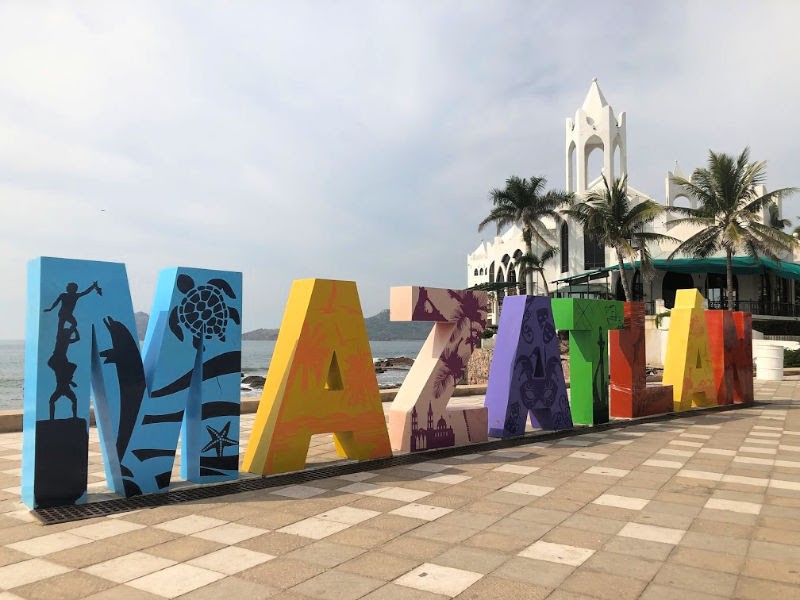
The Malecon/photo: Helen Earley
Mazatlan V-Bikes
In February 2019, the city installed hundreds of V-bikes: sturdy green bicycles, which can be rented for 5 pesos per trip (about 35 cents), using a smartphone app (download app here).
A more comfortable alternative for families is Baikas rentals, which has bikes of all sizes – and even tricycles and roller skates! A half-day bike rental is $200 pesos (about 14 Canadian dollars).
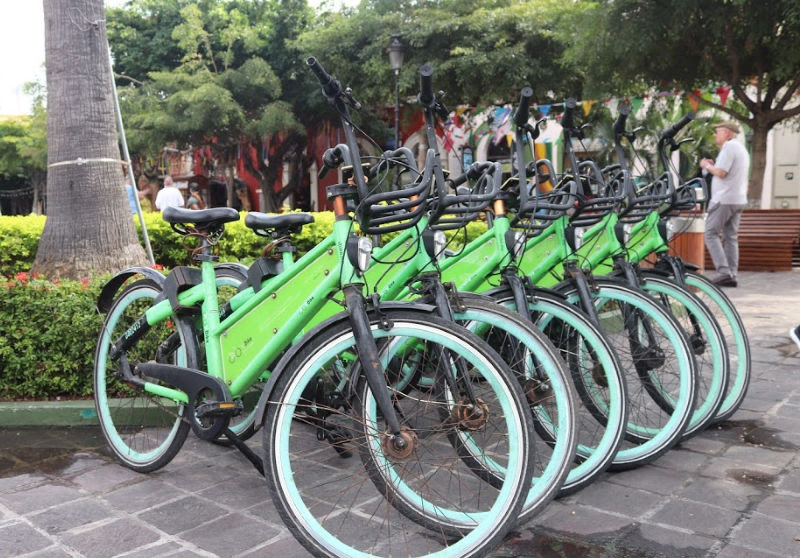
Mazatlan’s distinctive green V-bikes are a fun and economical way to see the city/photo: Helen Earley
Pulmonias in Mazatlan
Another way to get around in Mazatlan is to take a ride in a pulmonia (pronounced pul-mo-NEE-ah) – a taxi named after an illness! Some say it’s because when the open-air cars were first established in Mazatlan, there was concern that either the exhaust, or the cold air (or both!) would expose passengers to a lung infection.
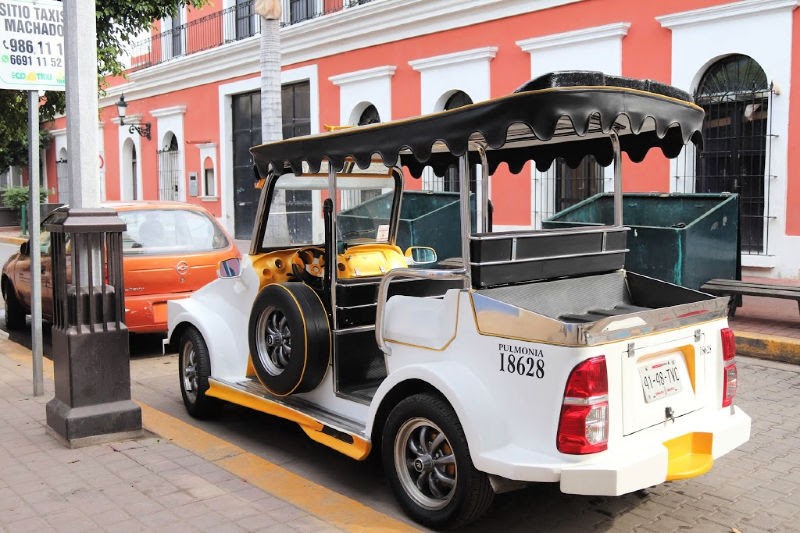
The newer-style pulmonia in Mazatlan’s Centro Historico/Photo: Helen Earley
There are actually two types of pulmonias – the original, which has a VW engine, and the new style, produced by Nissan, which is more like a regular car. Pulmonias have a set price per journey, the fare is regulated and there seems to be a friendly unspoken rivalry between drivers of the classic and the modern style.
Many Mazatlan pulmonias are loaded with an impressive speaker system, creating an open-air party taxi. The drivers double as DJs for your journey – most have a cache of USB sticks holding all your favourite tunes (or what they think might be your favourite tunes!). Tip: Don’t be afraid to request some local Banda music, rather than 80’s hits.
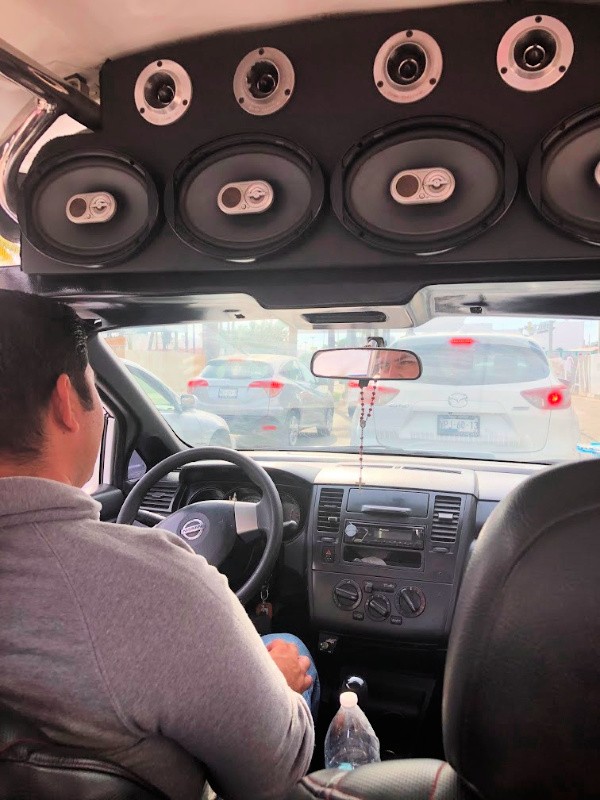
Turn it up! Some pulmonias are like a party-taxi/photo: Helen Earley
Mazatlan’s big green bus
In Mazatlan, there is a big green bus, designed especially for tourists. The bus runs all day from the cruise ship terminal (Mazatlan sees 600 thousand cruise ship passengers per year) through the Historic Centre to the Golden Zone and beyond. It costs 11 pesos (about 80 cents), regardless of the length of journey, and the driver can make change from small bills.
Feeling adventurous, I took this bus back to my resort on my first day in Mazatlan, proudly thinking I was taking a “local” bus. Once I sat down, I was surprised to hear Canadian accents. Within a few minutes, I discovered that literally everyone else on the bus was from Alberta. And they were all talking about the weather… in Alberta. The backpacker in me blushed: I felt like an outsider – but only because I am from Halifax!
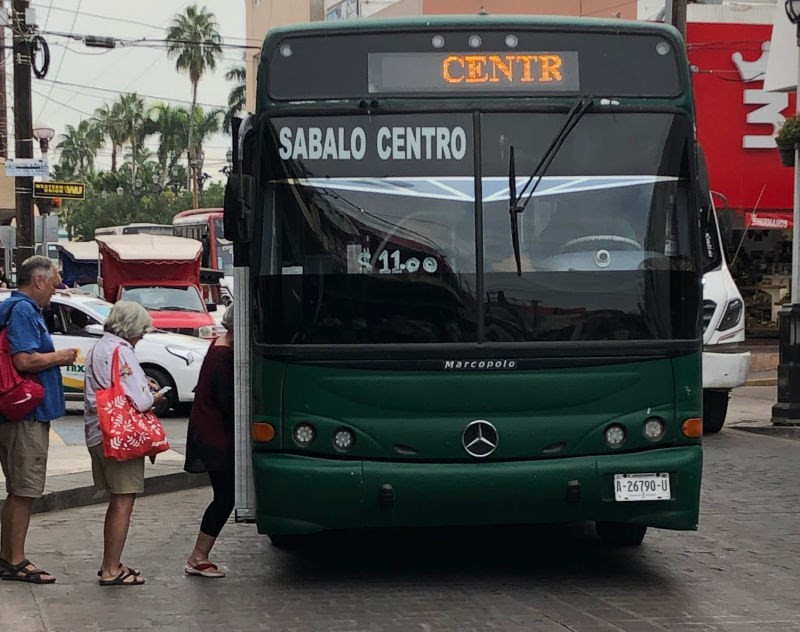
Hop on the Alberta-bus/Photo: Helen Earley
People-Watching at the Plazuela Machado
While the Malecon is a great place for being active, the best place to relax in Mazatlan is the Plazuela Machado. Built in 1837, it the oldest plaza in Mazatlan, established by Don Juan Nepomuceno Machado, a wealthy Filipino merchant who is considered by some to be Mazatlan’s “founding father.” In the centre of the plaza is a cast iron Gazebo built in 1870.
Around the main square, there are lovely restaurants, cafés, bars and boutique hotels. (My first drink here was a delicious cappuccino from a place called Browniemania). The streets around the Plaza are pedestrianized on the weekends, and at 5 o’clock on Friday and Saturday nights, the plaza comes alive with twinkly lights, market vendors and live music.
Since Mazatlan’s town centre is equally enjoyed by locals, international visitors and seasonal residents – as well as domestic tourists who come here on the weekends, it’s hard to tell who’s who. A pleasant side effect of this is that vendors are never aggressive: there is very little pressure or haggling here, and to me, it felt very safe.
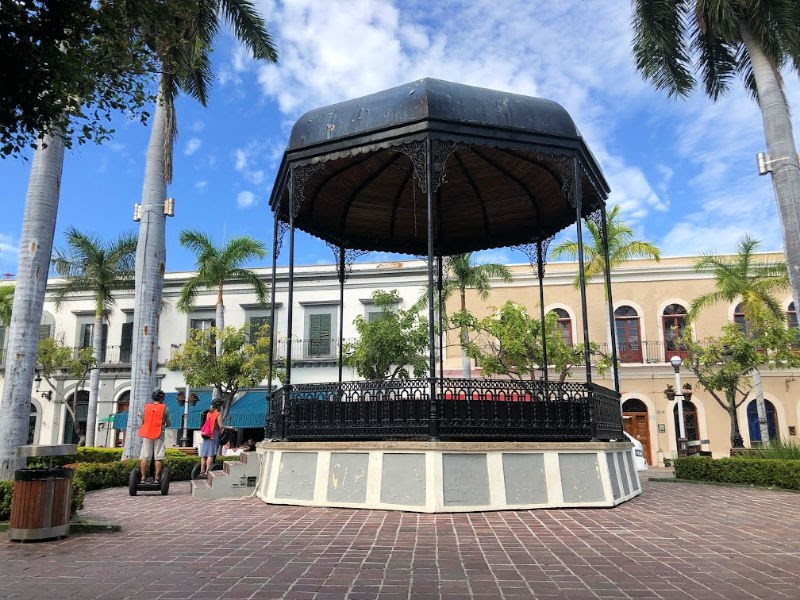
Plazuela Machado/photo: Helen Earley
Plazuela Machado is a great place to begin a walking tour of the city. There are several options including this self-guided walking tour from the English-speaking website, Mazatlan life. You can also book a tour of Mazatlan with the trusted company Pronatours, which also offers day trips into the Sinaloan countryside.
Another fabulous way to explore the city is by Segway with Baikas, a tour and company that accommodates groups of all sizes, including families with children.
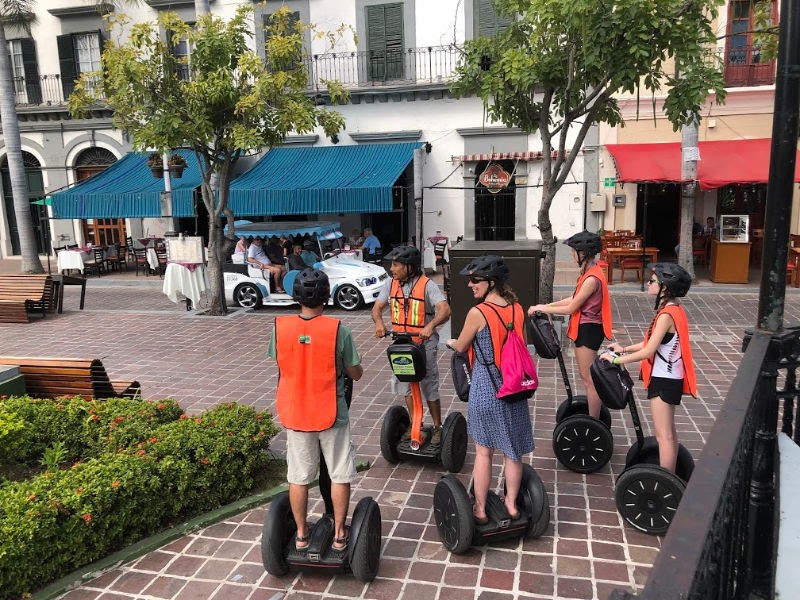
Segway tours with Baikas/photo: Helen Earley
Mazatlan’s Cathedral, and its Jewish connection
Mazatlan is unlike some other Mexican settlements in that it was built by industry, not as a Catholic mission. But religious influence is still apparent here, and one of its most beautiful examples is the Cathedral of the Immaculate Conception – a stunning building built in Baroque and new Gothic style.
Built between 1856and 1875, the Cathedral was designed to be half of its present size, but a large donation from the Jewish community meant that money was no barrier…and the design followed suit. Look closely and you can see a unique feature – 28 stained glass windows, each one with the star of David. In 1875, this was father Miguel LaCarra’s way of saying thank you to the generous Jewish donor/s.
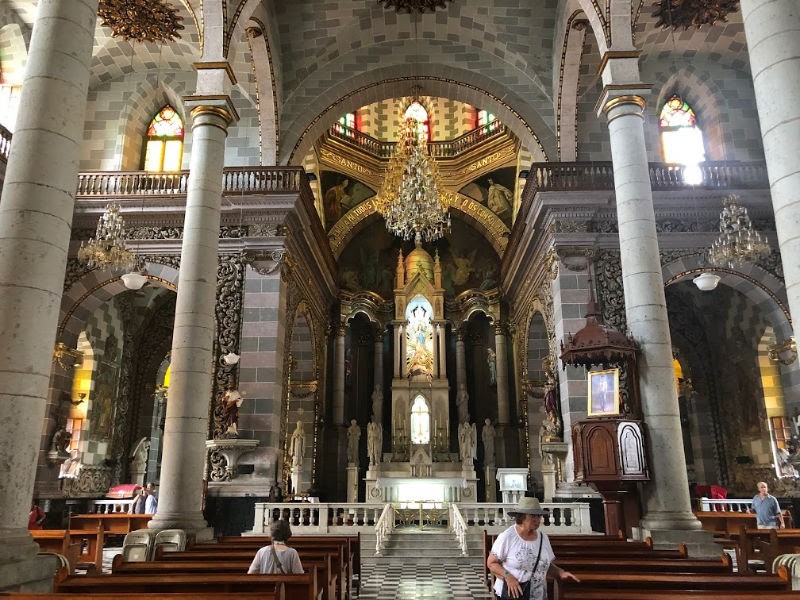
The stunning interior of Mazatlan’s cathedral/photo: Helen Earley
The rebirth of the Angela Peralta Theatre
Another essential aspect of Mazatlan culture is the Angelo Peralta theatre. Constructed in 1869, it had a glamorous beginning in life, before falling into disrepair. In the 1940s it was a movie theatre; in the 1960’s it became a repair shop for pulmonias; in 1975, parts of the theatre collapsed during Hurricane Olivia.
When officials decided to restore the theatre in the 1990’s they found a tree growing right through the middle of the stage, but with passion (and investment), the theatre was transformed to its former glory and beyond. Now, along Calle Carnaval, the culturally rich city of Mazatlan not only has a theatre, but a drama school, an orchestra, and a place for local children to take music lessons.
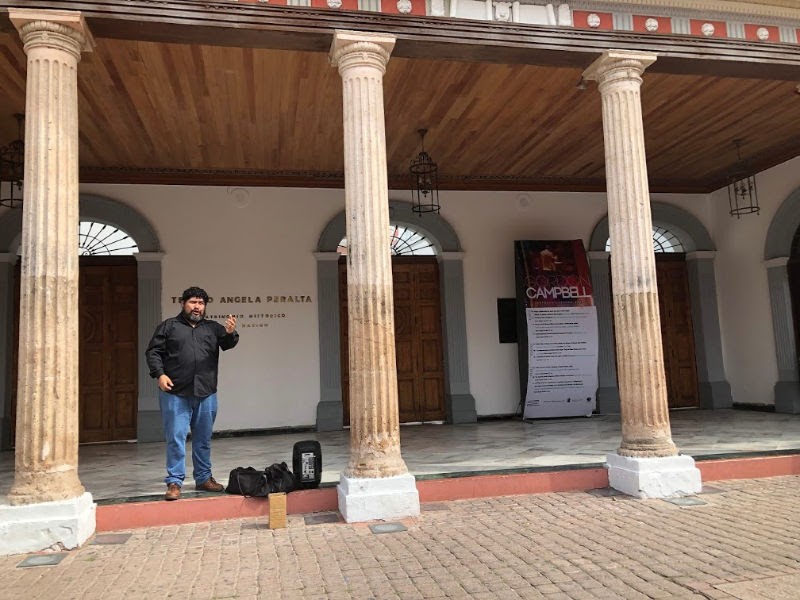
Opera al fresco at The Angela Peralta Theatre in Mazatlan/photo: Helen Earley
Exploring the (no-hassle) Pino Suarez Market
The Pino Suarez market, built in 1899, used the same construction techniques as the Eiffel Tower, built seven years earlier, with 300 thousand pounds of iron, and 29 solid columns that support the roof.
Today, there are over 250 vendors, selling food, meat, fish, cheese, breads, textiles, fruit, candy, and tourist items such as t-shirts and mugs. There are also plenty of places to eat inside, and along the perimeter of the market, including stalls selling fresh juices, tamales and tostadas. On the upper level of the market, there are a number of sit-down restaurants.
Same as Plazuela Machado, there is very little hassle here. Because this is where the locals do their shopping, you will likely get no more than a polite “buenos dias” from vendors, as opposed to a heavy sales pitch.
But, with Mazatlecos being so polite, almost reserved in their nature, how does one discover the treasures of the market itself? The only way, in my opinion is to talk to the locals -and the best way to do that is through a local food tour, like the Flavor Teller.
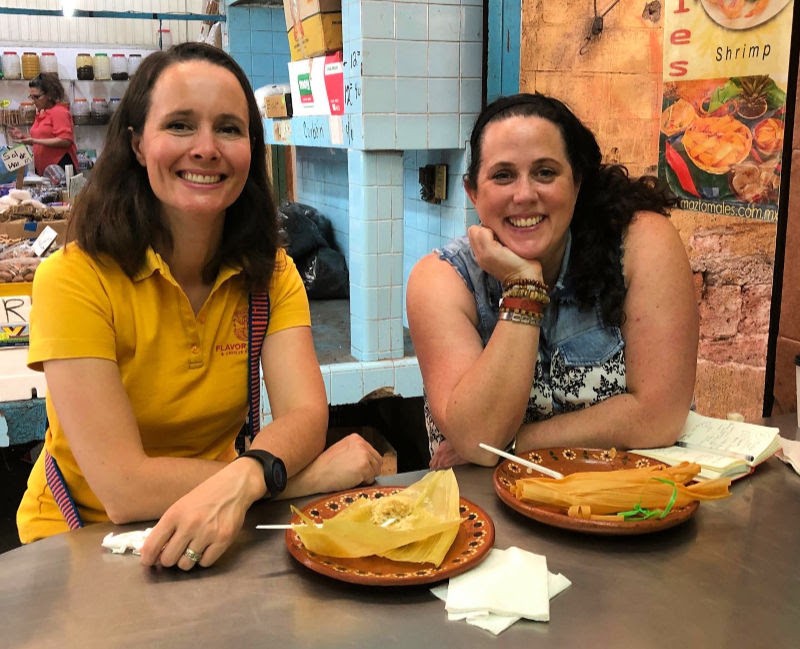
Maikke Hoekstra and hungry tourist Helen Earley, enjoying tamales at the Pino Suarez market/photo: Helen Earley
Flavor Teller Mercado and More Tour
The Mercado and More Tour, led by owner, Maaike Hoekstra is a great way to learn about Mazatlan’s culture and history. Originally from the Netherlands, Hoekstra – who married a Mazatleco and has brought up her children here – is the perfect tour guide, acting as a translator between various market vendors and me – the hungry tourist.
Because Hoekstra is local, her Spanish is perfect – and she knows everyone! – but because she is an international, she understands the awe and beauty of the market through a visitor’s eye, like how incredible it is to be able to buy a small bag of dried chipotle chiles for 15 pesos (one dollar), or how wonderful it is to taste seven local cheeses at a cremeria, the first a salty queso fresco – and the last, a tangy hard cheese produced by the Mennonite communities who live in the Sinaloan countryside.
“If you think Mexico doesn’t have a lot of cheeses,” says Hoekstra, “think again!”
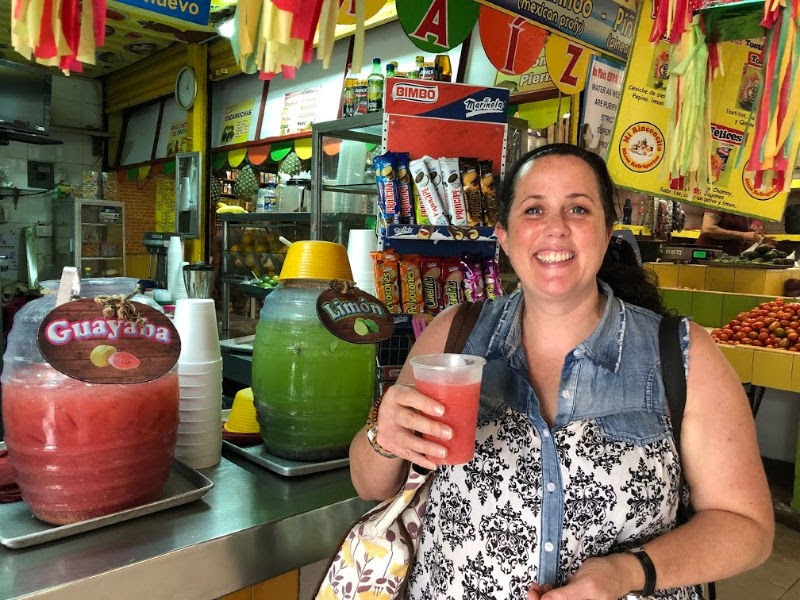
Agua fresca at the Pino Suarez market/photo: Helen Earley
Over four hours, we eat tamales, tostadas, mackerel ceviche, marlin dip, a sandwich, a delicious fruit salad called escamocha and even ice cream. There are drinks too – a refreshing aqua fresca (as I sip, Hoesktra tells me about water filtration, and why market drinks are perfectly safe) – and finally, in a local diner, a bottle of Tonicol – a vanilla-flavoured soft drink, like Coke, but a million times better.
Rumour has it, Coke has been after the Tonicol recipe for years!
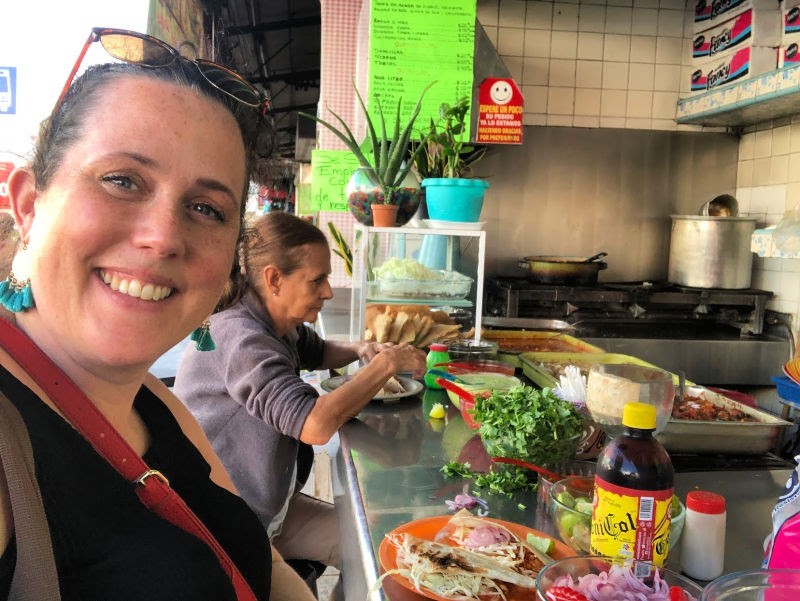
The Flavor Teller tour gave me the confidence to return to the market for lunch, later in the week/selfie: Helen Earley
Dining in Mazatlan
Mazatlan’s cuisine is so distinct from the rest of the country that the city is applying for designation as a UNESCO designation as a creative city for its gastronomy.
The best fine restaurant in town is said to be Hector’s Bistro, which came on the scene 10 years ago and raised the bar on dining, service and desserts. Interestingly, Hector’s serves European food with no Sinaloan influence (apart from the delicious, fresh ingredients) but no one is complaining. In fact, Hector himself – a Mazatleco who went away to Europe and came back – is as close to Mazatlan gets to a celebrity chef.
To get a taste of local seafood in a luxury, ocean-view setting, La Concha at the El Cid El Moro hotel is a superb place to wine and dine. On my visit, the chef prepared a selection of local delicacies – all seafood based: Sashimi, Ceviche, Aguachile, Campechana – the latter being a huge goblet of shrimp and octopus and other seafood in a warm broth. It is no surprise that both Mazatlan’s nicknames: “shrimp capital of the world” and “pearl of the Pacific” refer to its abundance of seafood.
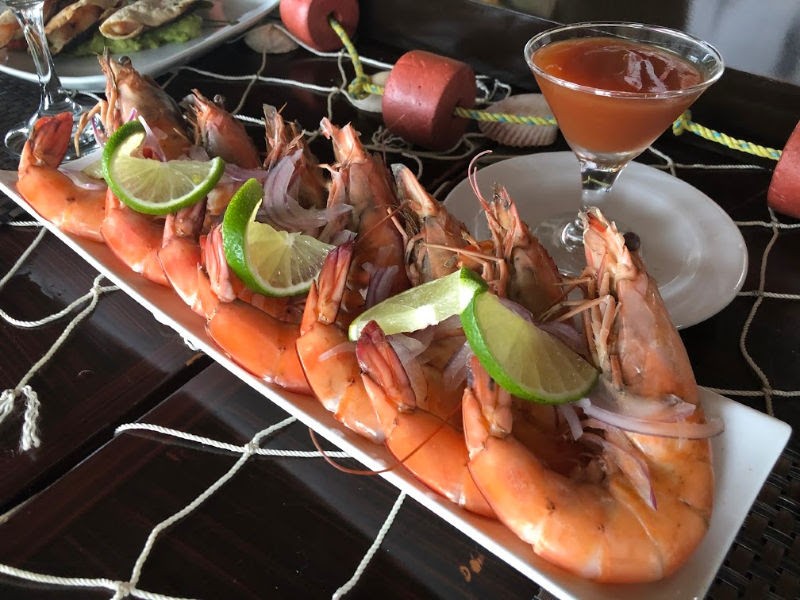
One of many delicious seafood dishes at La Concha/photo: Helen Earley
For families, the only place to go is Panama – a local chain so popular that people come from all over the province of Sinaloa to eat here. In fact some say, “if you haven’t been to Panama, you haven’t been to Mazatlan!”
Panama has a vast menu of local specialties. Try a typical Sinaloan breakfast, with eggs, beans and cheese. Instead of coffee, ask for café de olla – a spicy drink with cinnamon and piloncillo (a type of cane sugar) for sweetness. And for dessert – yes, in Mazatlan, it’s OK to have dessert at breakfast – wait for the cake trolley to come around and try the local specialty: guava pie.
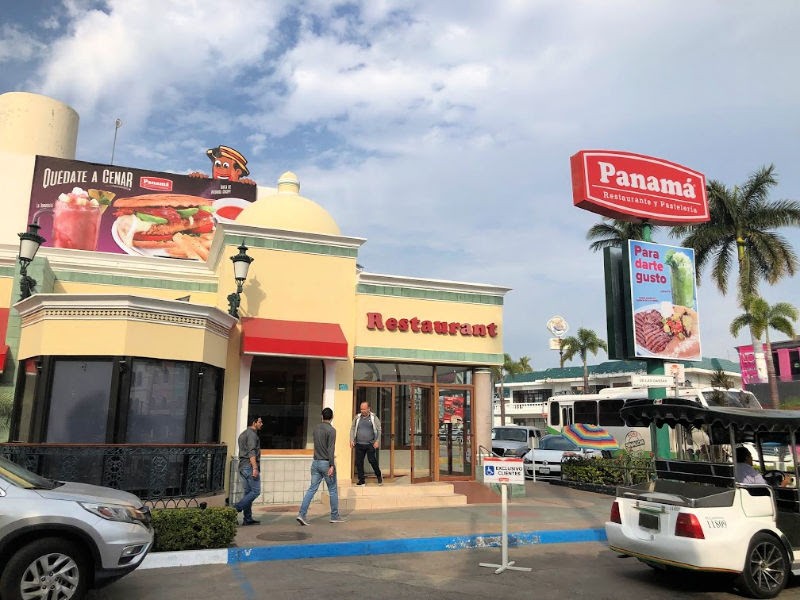
Where to stay in Mazatlan, on any budget
There are so many great places to stay in Mazatlan, whether you book a package holiday, or build your own vacation.
For the family looking for an all-inclusive experience, the El Cid group of hotels has three properties in Mazatlan, and for familes, the best one is the El Cid Castallia Beach because it has a kids club and a teens club.
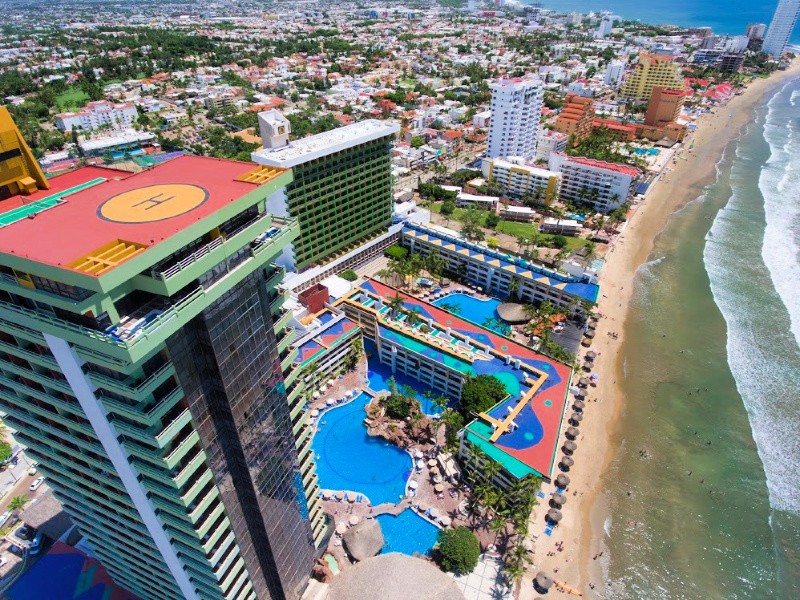
El Cid El Moro: one of three El Cid properties in Mazatlan/contributed
If you want to stay in the Centro Historico, rather than the Zona Dorada, you will have to compromise on amenities and service – but you will be well-rewarded with charm.
On my final night in Mazatlan I stayed in the “Jack Kerouac Suite” of the Melville Hotel. My room in this former convent was rustic, but my suite had a small living room and kitchen, and my bedroom windowoverlooked one of the most beautiful streets in the town, lit up at night by small patio lights.
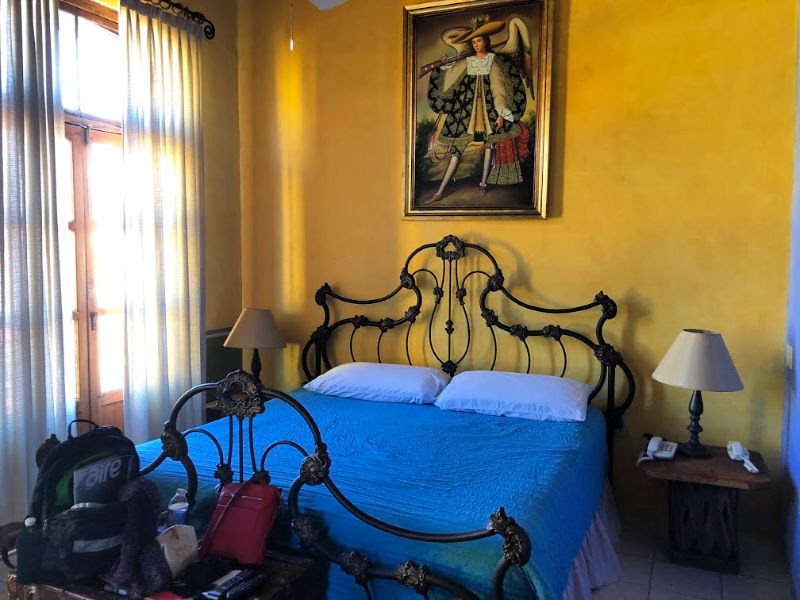
Enjoying the sunset in Mazatlan
Saying goodbye to Mazatlan is hard, but saying goodnight is magical.
In the late afternoon, in the Centro Historico, long shadows fall against brightly coloured stone walls, and tables are pushed out into the streets for supper.
On the sea of Cortez, the sun draws out long paintbrush sweeps of hot red sky, falling into the ocean. Boat cruises slow their motors. On resort beaches, guests draw together at the edge of the water, and everyone becomes quiet. It is easy to see how this city has attracted thinkers, artists and dreamers.
Finally, back in the darkness of the historic town, delicate strings of tungsten lights are strung above the streets. It is a fairy tale scene ready for the fashionistas, hipsters, snowbirds and tourists who are going out for dinner.
Mazatlan definitely has something for everyone – the foodie, the historian and the adventurer…or even those who just want to relax and enjoy sunsets on the beach.
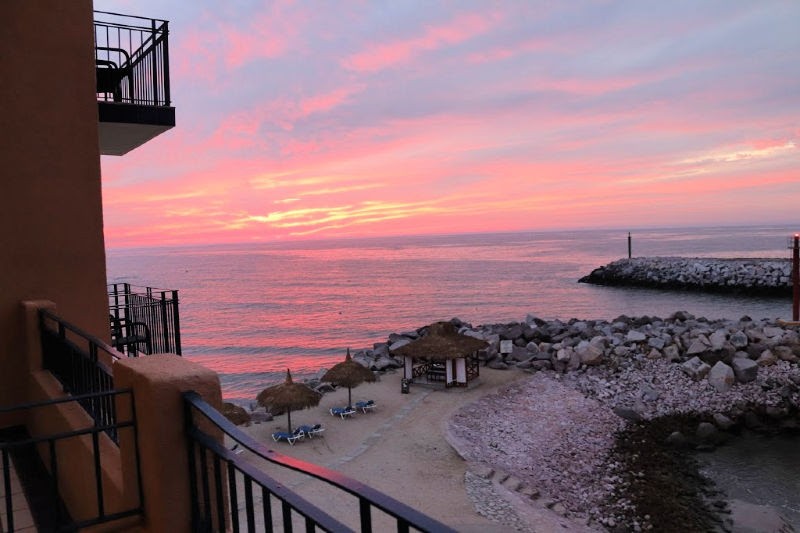
Helen Earley is a Halifax-based travel writer. She was a guest of Tourism Mazatlan, which did not review or approve this article.
